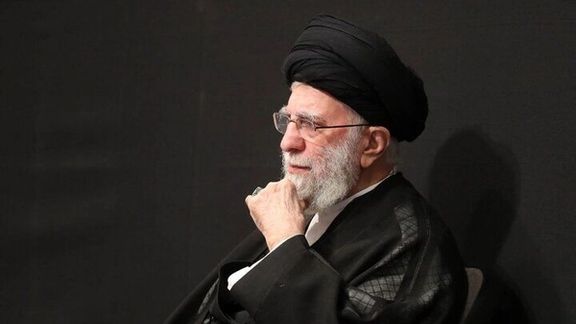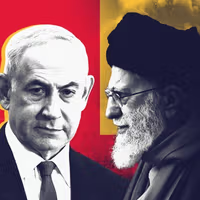The mood
On Thursday night, Khamenei's special security brigade cordoned off the entire area between Hemmat Expressway and Abbasabad Avenue, bordered by Modarres Highway to the east and Pakistan Avenue to the west, where Tehran's Mosalla (prayer ground) is located. The IRGC's sniffing dogs and anti-bomb units checked every tree and all the bushes, not to mention parked vehicles and the roads.
Iran watchers who analyzed Khamenei's speech and reviewed videos of the event largely concluded that it was staged as a show of support for Khamenei and to demonstrate Tehran’s security. The event also aimed to dispel rumors suggesting Khamenei had been hiding in a secret bunker following the death of Lebanese Hezbollah leader Hasan Nasrallah in Beirut on September 28.
Apart from top IRGC commanders and intelligence chiefs, nearly all members of the current and previous governments were present. Notably absent were three former presidents, who are typically not invited to such events, as they are not among Khamenei’s favored figures.
Although Iranian media praised the Supreme Leader’s "bravery" for appearing at a high-profile public event despite Israeli threats, several callers to foreign-based Persian media outlets noted that both Khamenei and the public were well aware that Israel was highly unlikely to target a Friday prayer gathering.
The man
Khamenei entered the prayer area hours after everyone else, including dignitaries, military units, and organized groups like Afghan and Pakistani students from the Qom Seminary, as noted by Iran analysts.
Despite rumors that his wife had recently passed away, Khamenei showed no signs of mourning during his appearance, suggesting the rumors were likely false. Known for openly displaying emotion, as he did during the death of Qasem Soleimani, Khamenei appeared composed, standing firm and tall with a neutral expression.
Upon his arrival, he briefly acknowledged the President, the Majles Speaker, and the Judiciary Chief with nods and waves. Later, as a eulogist recited somber stories from Shia history, Khamenei showed the usual signs of his deep thoughtfulness. He called the eulogist who ran and knelt before him, and he was seen offering some advice or kind words to the eulogist.
Khamenei's defiant character was as evident as ever. He reaffirmed that any aggressive move by Israel would be met with a decisive response, neither rushed nor delayed. However, it was clear he aimed to avoid a prolonged, large-scale conflict. As one Iran analyst observed, Khamenei seems to be buying time, waiting for the outcome of the US elections before making any significant strategic decisions.
The content, foul language
There was nothing new in what he said. Everything including his hatred of Israel and the United States was consistent with the ideological master narrative that applied to everything since 1979.
Although many observers noted that Khamenei’s speech in both Persian and Arabic was tightly controlled, he couldn't resist using inflammatory language, referring to Israel as the United States' "mad dog."
Khamenei also disappointed analysts who had predicted he might announce a shift in Iran's nuclear doctrine toward weaponization or name his son as his successor during the event. His silence on these matters served as an implicit reminder that analysts are often wrong when they venture into predictions.
World vision
His world vision was also according to the master narrative. He saw himself as the leader of the Muslim world and addressed the Muslims of Lebanon and Gaza in Arabic reading out from his notes.
He defined the "Muslim world" and the axis of resistance in his own terms, stretching "from Afghanistan to Yemen, and from Iran to Lebanon." In doing so, he glossed over the Shia-Sunni divide by praising the Shiite 12 Imams at the start of his Arabic speech. Notably, he also included Afghanistan as part of the axis of resistance, despite its historical absence from this coalition. Perhaps, he hinted at something not yet publicly known.
Show of support and security
Overall, the display of support appeared highly stage-managed, with long lines of buses ready to transport the organized participants back to their headquarters. The extensive security measures would have been impressive—if today marked the end of the world.










